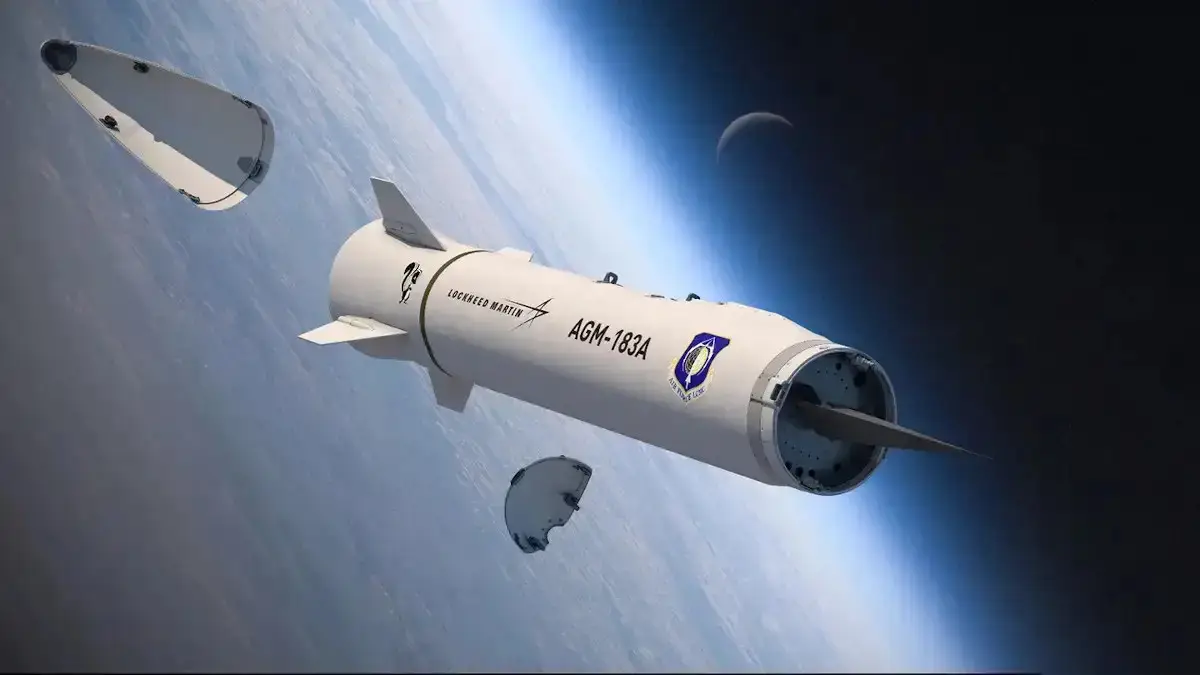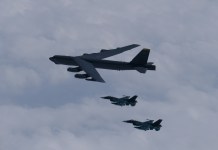The US Air Force has validated the loading procedures for its first air-launched hypersonic weapon with the B-52H aircraft at the Barksdale Air Force Base (AFB) in Louisiana, US.
The US Air Force’s 2nd Bomb Wing is based at Barksdale Air Force Base in northwestern Louisiana. The service said the Air-Launched Rapid Response Weapon, or ARRW, is anticipated to be prepared for deployment as early as the fall of 2023.
The Lockheed Martin AGM-183A ARRW is a long-range hypersonic missile developed for the United States Air Force. The missile is projected to boost the USAF’s hypersonic strike capability at stand-off ranges, allowing it to attack heavily defended, high-value targets.
A group of airmen carried out the test activity from the 2nd Maintenance Group, 307th Aircraft Maintenance Squadron, along with the ARRW and B-52H Stratofortress Systems Programs Office staff.
As part of this trial-and-error testing process, the Air Force personnel devised a standard procedure for loading and unloading the weapon system onto the B-52H Stratofortress bomber aircraft.

The ARRW travels at five times the speed of sound, which will allow military commanders to attack time-sensitive targets quickly in case of a conflict.
“It demonstrates the far-reaching capabilities of the B-52, and now it projects its combat capabilities even further with the ARRW system,” said Master Sgt. Caleb Nolen, Air Force Global Strike B-52 armament systems manager.
The service noted that the development of this hypersonic weapon was sped up due to the National Defense Authentication Act section 804 Rapid Prototyping, which is part of the Rapid Fielding program. The program promotes rapid weapon development in specified instances.
After successfully validating loading and unloading methods, the service will begin ARRW live fire tests by the end of this year. Once the tests are completed, the weapon system will be evaluated for rapid production.
Bret Berryhill, the ARRW logistics chief, said that the FY16 NDAA implemented section 804 as a means for programs to prototype weapons within five years quickly, after which it would be decided whether the program had been successful enough to advance to the Rapid Production phase.

Air-Launched Rapid Response Weapon
The US has recently invested hundreds of millions of dollars in hypersonic research and development. The US Military leaders have highlighted the importance of being a global leader in hypersonic defensive technologies, particularly in light of China and Russia’s rapid advancements in this area.
In August 2018, the US Air Force awarded Lockheed Martin a $480 million contract to build a hypersonic air-launched weapon. The resulting missile, designated AGM-183A ARRW, performed its initial captive carry flight test on board a B-52 in June 2019.
The ARRW’s last known test, which successfully tested the booster performance, was carried out in July off the coast of Southern California. This test marked the end of the booster test phase. Additionally, the trial represented the second occasion when the ARRW successfully disengaged from the B-52 aircraft.
Before that, a test by the 419th Flight Test Squadron and the Global Power Combined Test Force in May marked the first successful test of ARRW, following a streak of three failures in 2021. During the test, the ARRW detached from the launch aircraft, and the rocket ignited for the expected time.

Meanwhile, the three test flights in 2021 failed because the missile could not detach from the carrier aircraft or launch a booster rocket. The service later said that a loose wire prevented the missile from performing as intended.
Following test failures and delays, US Congress canceled $161 million in procurement funding that the Biden administration requested for the program in fiscal 2022.
In addition to ARRW, the USAF is working on the Hypersonic Attack Cruise Missile (HACM) program, which aims to create a more affordable, smaller cruise missile based on air-breathing propulsion.
The Hypersonic Attack Cruise Missile (HACM), developed by Raytheon Missiles and Defense in collaboration with Northrop Grumman, is an air-launched, scramjet-powered hypersonic weapon.
In September, the service granted Raytheon Missiles and Defense a $985 million contract to develop a hypersonic cruise missile.
The USAF’s F-15EX fighter, which can carry more weapons than the F-35 fighter, will reportedly be the first aircraft to be equipped with the new HACM.
Additionally, the HACM can be launched from both bombers and fighter aircraft. A senior USAF officer noted that a B-52 could carry 20 or more HACMs.
- Contact the author at ashishmichel(at)gmail.com
- Follow EurAsian Times on Google News





